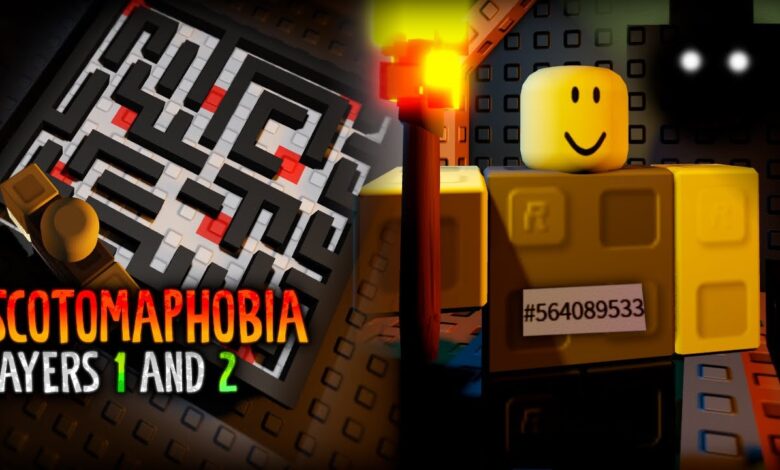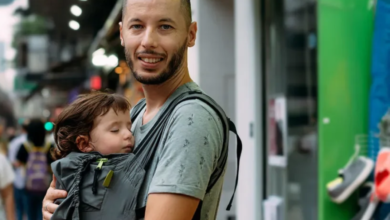Scotomaphobia: Understanding the Fear of Blind Spots

Scotomaphobia, the fear of blind spots, is a specific phobia that affects a significant number of individuals worldwide. This phobia, like many others, can have profound effects on a person’s daily life, limiting their ability to perform routine tasks and engage in social activities. Understanding scotomaphobia requires a deep dive into its definition, causes, symptoms, and potential treatments.
At its core, scotomaphobia is an irrational fear of experiencing a blind spot in one’s vision. While everyone occasionally experiences blind spots, particularly when transitioning between light and dark environments, individuals with scotomaphobia have an overwhelming and persistent fear of these occurrences. This fear can stem from a variety of sources, including traumatic experiences, underlying anxiety disorders, or genetic predispositions. Understanding the underlying mechanisms of scotomaphobia is crucial for developing effective treatment strategies and helping those affected regain control over their lives.
Scotomaphobia Symptoms and How to Overcome Them
The symptoms of scotomaphobia can vary widely among individuals, but they generally include intense anxiety or panic attacks when confronted with the prospect of a blind spot. Physical symptoms might include sweating, trembling, heart palpitations, and shortness of breath. Psychologically, sufferers may experience feelings of dread, a sense of impending doom, or an overwhelming desire to avoid situations where a blind spot might occur.
Overcoming scotomaphobia often involves a combination of therapeutic approaches. Cognitive-behavioral therapy (CBT) is one of the most effective treatments, helping individuals reframe their thoughts and reactions to blind spots. Exposure therapy, a subset of CBT, gradually exposes patients to their fear in a controlled environment, reducing their anxiety over time. In some cases, medication may be prescribed to manage severe symptoms, particularly if the phobia is accompanied by other anxiety disorders. Mindfulness and relaxation techniques can also play a role in managing the immediate physical symptoms of scotomaphobia, helping sufferers to remain calm and grounded.
Scotomaphobia Treatment Options: What You Need to Know
Treatment for scotomaphobia can be highly individualized, depending on the severity of the condition and the underlying causes. Cognitive-behavioral therapy (CBT) is widely regarded as the gold standard for treating specific phobias, including scotomaphobia. Through CBT, patients learn to identify and challenge irrational thoughts related to their fear of blind spots, replacing them with more rational and constructive beliefs.
Exposure therapy, often used in conjunction with CBT, involves gradually exposing the patient to their fear in a safe and controlled manner. This process helps desensitize the individual to the fear stimulus, reducing their overall anxiety response. For some, pharmacological interventions may be necessary to manage acute symptoms or coexisting anxiety disorders. Selective serotonin reuptake inhibitors (SSRIs) and benzodiazepines are commonly prescribed medications that can help reduce anxiety and improve overall mental health.
Alternative treatments, such as eye movement desensitization and reprocessing (EMDR) and hypnosis, have also shown promise in treating specific phobias. These methods can help patients process traumatic memories and reduce the emotional impact of their fear. Additionally, lifestyle changes, such as regular exercise, a healthy diet, and adequate sleep, can support overall mental well-being and enhance the effectiveness of other treatments.
Scotomaphobia Causes: Exploring the Root of the Fear
The causes of scotomaphobia are multifaceted, often involving a combination of genetic, environmental, and psychological factors. Traumatic experiences related to vision or eye health, such as witnessing an accident or undergoing a painful medical procedure, can trigger the development of scotomaphobia. In some cases, the phobia may arise from a more generalized anxiety disorder, where the fear of blind spots is just one manifestation of broader anxiety symptoms.
Genetics can also play a role in the development of scotomaphobia. Individuals with a family history of anxiety disorders or specific phobias are more likely to develop similar conditions themselves. This predisposition can be exacerbated by environmental factors, such as high levels of stress or exposure to anxiety-inducing situations.
Psychologically, scotomaphobia can be understood through the lens of classical conditioning. If an individual has a negative experience associated with a blind spot, they may begin to associate blind spots with feelings of fear and anxiety. Over time, this association can become deeply ingrained, leading to the development of a full-blown phobia. Understanding these root causes is essential for developing effective treatment strategies and helping individuals overcome their fear of blind spots.
Scotomaphobia: Tips for Managing Fear and Anxiety
Managing scotomaphobia involves a combination of cognitive, behavioral, and lifestyle strategies. Cognitive-behavioral techniques, such as thought challenging and cognitive restructuring, can help individuals reframe their negative beliefs about blind spots. By identifying and questioning irrational thoughts, sufferers can reduce their overall anxiety and develop a more balanced perspective.
Behavioral strategies, such as exposure therapy, can also be highly effective in managing scotomaphobia. Gradual and controlled exposure to blind spots helps desensitize individuals to their fear, reducing their overall anxiety response. Practicing relaxation techniques, such as deep breathing, progressive muscle relaxation, and mindfulness meditation, can help manage the physical symptoms of anxiety and promote a sense of calm.
Lifestyle changes can also play a significant role in managing scotomaphobia. Regular physical activity, a balanced diet, and adequate sleep can support overall mental health and reduce anxiety. Additionally, engaging in activities that promote relaxation and well-being, such as yoga, tai chi, or creative hobbies, can help individuals manage stress and improve their quality of life. Support from friends, family, or a mental health professional can provide valuable encouragement and guidance throughout the process of overcoming scotomaphobia.
Scotomaphobia in Children: Signs and Solutions
Scotomaphobia can also affect children, and early identification and intervention are crucial for preventing long-term consequences. Signs of scotomaphobia in children may include excessive fear or anxiety about vision-related issues, avoidance of activities that involve potential exposure to blind spots, and physical symptoms such as headaches, stomachaches, or panic attacks.
Addressing scotomaphobia in children often involves a combination of therapeutic and supportive strategies. Cognitive-behavioral therapy (CBT) is highly effective for children, helping them understand and challenge their irrational fears. Play therapy and creative arts therapies can also provide a safe and expressive outlet for children to process their emotions and develop coping skills.
Parental support is essential in helping children manage scotomaphobia. Encouraging open communication about their fears and providing reassurance and understanding can help reduce anxiety. Gradual exposure to feared situations, guided by a mental health professional, can also help children build confidence and resilience. Additionally, promoting a healthy lifestyle with regular physical activity, a balanced diet, and adequate sleep can support overall mental well-being and reduce anxiety symptoms.
Scotomaphobia: Effective Therapies and Coping Strategies
Effective therapies for scotomaphobia often involve a combination of cognitive, behavioral, and alternative approaches. Cognitive-behavioral therapy (CBT) is a cornerstone treatment, helping individuals identify and challenge irrational thoughts related to their fear of blind spots. Through CBT, patients learn to replace negative beliefs with more rational and constructive ones, reducing their overall anxiety.
Exposure therapy, a key component of CBT, involves gradually exposing individuals to their fear in a controlled and safe manner. This process helps desensitize the individual to the fear stimulus, reducing their overall anxiety response. In addition to CBT, alternative therapies such as eye movement desensitization and reprocessing (EMDR) and hypnosis have shown promise in treating specific phobias. These methods can help patients process traumatic memories and reduce the emotional impact of their fear.
Coping strategies for managing scotomaphobia include mindfulness and relaxation techniques, such as deep breathing, progressive muscle relaxation, and meditation. These practices can help manage the immediate physical symptoms of anxiety and promote a sense of calm. Lifestyle changes, such as regular exercise, a healthy diet, and adequate sleep, can also support overall mental well-being and enhance the effectiveness of other treatments. Support from friends, family, or a mental health professional can provide valuable encouragement and guidance throughout the process of overcoming scotomaphobia.
Scotomaphobia: How to Recognize and Address It
Recognizing scotomaphobia involves identifying both the physical and psychological symptoms associated with the fear of blind spots. Common physical symptoms include sweating, trembling, heart palpitations, and shortness of breath. Psychologically, individuals may experience intense anxiety, feelings of dread, and an overwhelming desire to avoid situations where a blind spot might occur.
Addressing scotomaphobia often requires a multifaceted approach. Cognitive-behavioral therapy (CBT) is one of the most effective treatments, helping individuals reframe their thoughts and reactions to blind spots. Exposure therapy, a subset of CBT, gradually exposes patients to their fear in a controlled environment, reducing their anxiety over time. In some cases, medication may be prescribed to manage severe symptoms, particularly if the phobia is accompanied by other anxiety disorders.
In addition to formal treatments, self-help strategies can also be beneficial. Practicing mindfulness and relaxation techniques, such as deep breathing and meditation, can help manage the immediate physical symptoms of anxiety. Engaging in regular physical activity, maintaining a balanced diet, and getting adequate sleep can support overall mental health and reduce anxiety. Support from friends, family, or a mental health professional can provide valuable encouragement and guidance throughout the process of overcoming scotomaphobia.
Scotomaphobia: Real Stories and Experiences
Hearing real stories and experiences from individuals who have faced scotomaphobia can provide valuable insights and inspiration for others dealing with the same fear. Many people have successfully overcome their phobia through a combination of therapy, support, and self-help strategies. These personal accounts can highlight the challenges and triumphs of living with scotomaphobia, offering hope and encouragement to those currently struggling.





